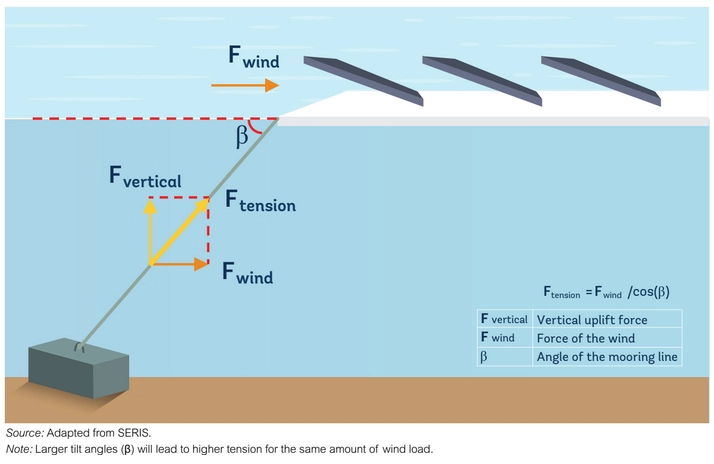The anchoring and mooring system holds the floating platform in place and provides the mechanical stability. The structures can range from simple shore anchoring to highly complex anchors; typical is a key component of the system, ensuring stability, durability, and efficient energy production.
Anchoring System
Floating Solar Platforms can be anchored either to the bottom of water body or to the bank of the shore. Common types of anchoring;
Bottom Anchoring – are dead weights such as concrete blocks that rely on their mass and helical anchors that screws drilled into the bed of the water body
Mooring Lines
Usually made of wire rope, galvanized steel wires, and chain. Many possible combinations if line type, size and configuration can be used to achieve the required mooring performance.
Design Considerations
Site Assessment: Detailed analysis of the water body (depth, current, wave action, wind patterns) is essential for designing an effective anchoring and mooring system.
Wind load resistance is normally calculated from the drag forces developed by the float structures. Wind speed and direction data are also the critical to consider as it determines the maximum forces on the island. As the mooring lines are mainly used to constrain the lateral movements, they should be as horizontal as possible to avoid excessive tensile stress under wind load.

Environmental Impact: Minimizing ecological disruption is crucial. The materials and methods chosen should have minimal adverse effects on aquatic life and water quality.
Durability and Maintenance: The system must withstand extreme weather conditions and require minimal maintenance. Regular inspections are necessary to ensure long-term performance.